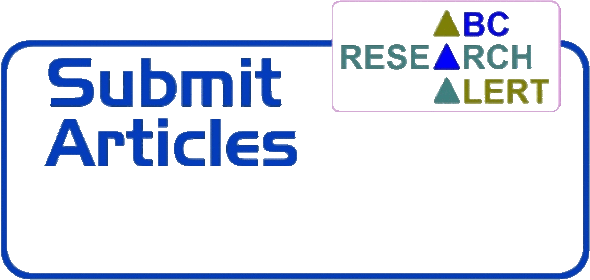Innovative Approaches to Recycling Rubber Waste in the United States
DOI:
https://doi.org/10.18034/ra.v7i3.660Keywords:
Rubber Waste Recycling, Sustainable Rubber Repurposing Techniques, Rubber Waste Upcycling, Rubber Reclamation, Revolutionary Rubber Waste ReprocessingAbstract
In the United States, managing rubber waste—especially from tires—presents severe environmental problems. This project aims to evaluate novel techniques for recycling rubber waste to appraise existing practices, examine new technologies, and suggest policy suggestions for sustainable waste management. The paper thoroughly analyzes US rubber waste recycling research and secondary data sources. Important discoveries highlight the shortcomings of traditional recycling techniques, including problems with quality and the environment. Cutting-edge technologies that have the potential to improve resource recovery and lessen environmental impact include devulcanization, pyrolysis, and chemical recycling. The policy implications underscore the necessity of infrastructure expenditures, cooperative collaborations, and regulatory incentives to expedite the implementation of novel recycling processes. Regulatory frameworks should be updated, research and development should be encouraged, and end-market potential for recycled rubber products should be promoted. This study emphasizes how critical it is to switch to creative methods of recycling rubber waste to address environmental issues and advance the circular economy. The United States can lead the way in creating an ecosystem for recycling rubber waste that is more effective and sustainable by enacting legislative changes and utilizing cutting-edge technologies.
Downloads
References
Anbazhagan, P., Manohar, D. R. (2015). Energy Absorption Capacity and Shear Strength Characteristics of Waste Tire Crumbs and Sand Mixtures. International Journal of Geotechnical Earthquake Engineering, 6(1), 28-49. https://doi.org/10.4018/IJGEE.2015010103
Buekens, A., Zhou, X. (2014). Recycling Plastics from Automotive Shredder Residues: A Review. The Journal of Material Cycles and Waste Management, 16(3), 398-414. https://doi.org/10.1007/s10163-014-0244-z
Coventry, Z. A., Tize, R., Karunanithi, A. T. (2016). Comparative Life Cycle Assessment of Solid Waste Management Strategies. Clean Technologies and Environmental Policy, 18(5), 1515-1524. https://doi.org/10.1007/s10098-015-1086-7
Gilmanshin, R., Ferenets, A. V., Azimov, Yu. I., Galeeva, A. I., & Gilmanshina, S. I. (2015). Innovative Technologies of Waste Recycling With Production of High Performance Products. IOP Conference Series: Materials Science and Engineering, 86(1), 012014. https://doi.org/10.1088/1757-899X/86/1/012014
Keskisaari, A., & Kärki, T. (2017). Raw Material Potential of Recyclable Materials for Fi-ber Composites: A Review Study. The Journal of Material Cycles and Waste Man-agement, 19(3), 1136-1143. https://doi.org/10.1007/s10163-016-0511-2
Maddula, S. S. (2018). The Impact of AI and Reciprocal Symmetry on Organizational Cul-ture and Leadership in the Digital Economy. Engineering International, 6(2), 201–210. https://doi.org/10.18034/ei.v6i2.703
Maddula, S. S., Shajahan, M. A., & Sandu, A. K. (2019). From Data to Insights: Leveraging AI and Reciprocal Symmetry for Business Intelligence. Asian Journal of Applied Sci-ence and Engineering, 8(1), 73–84. https://doi.org/10.18034/ajase.v8i1.86
Mullangi, K., Maddula, S. S., Shajahan, M. A., & Sandu, A. K. (2018). Artificial Intelli-gence, Reciprocal Symmetry, and Customer Relationship Management: A Paradigm Shift in Business. Asian Business Review, 8(3), 183–190. https://doi.org/10.18034/abr.v8i3.704
Pydipalli, R. (2018). Network-Based Approaches in Bioinformatics and Cheminformatics: Leveraging IT for Insights. ABC Journal of Advanced Research, 7(2), 139-150. https://doi.org/10.18034/abcjar.v7i2.743
Pydipalli, R., & Tejani, J. G. (2019). A Comparative Study of Rubber Polymerization Methods: Vulcanization vs. Thermoplastic Processing. Technology & Management Review, 4, 36-48. https://upright.pub/index.php/tmr/article/view/132
Rodriguez, M., Tejani, J. G., Pydipalli, R., & Patel, B. (2018). Bioinformatics Algorithms for Molecular Docking: IT and Chemistry Synergy. Asia Pacific Journal of Energy and Environment, 5(2), 113-122. https://doi.org/10.18034/apjee.v5i2.742
Sachani, D. K., & Vennapusa, S. C. R. (2017). Destination Marketing Strategies: Promoting Southeast Asia as a Premier Tourism Hub. ABC Journal of Advanced Research, 6(2), 127-138. https://doi.org/10.18034/abcjar.v6i2.746
Tejani, J. G. (2017). Thermoplastic Elastomers: Emerging Trends and Applications in Rub-ber Manufacturing. Global Disclosure of Economics and Business, 6(2), 133-144. https://doi.org/10.18034/gdeb.v6i2.737
Vegera, S., Malei, A., Sapeha, I., Sushko, V. (2018). Information Support of the Circular Economy: The Objects of Accounting at Recycling Technological Cycle Stages of In-dustrial Waste. Entrepreneurship and Sustainability Issues, 6(1), 190-210. https://doi.org/10.9770/jesi.2018.6.1(13)
Wilts, H., Gries, N. V., Bahn-Walkowiak, B. (2016). From Waste Management to Resource Efficiency-The Need for Policy Mixes. Sustainability, 8(7), 622. https://doi.org/10.3390/su8070622
Downloads
Published
Issue
Section
License
Copyright (c) 2019 Jayadip GhanshyamBhai Tejani

This work is licensed under a Creative Commons Attribution-NonCommercial 4.0 International License.
ABC Research Alert is an Open Access journal. Authors who publish with this journal agree to the following terms:
- Authors retain copyright and grant the journal the right of first publication with the work simultaneously licensed under a CC BY-NC 4.0 International License that allows others to share the work with an acknowledgment of the work's authorship and initial publication in this journal.
- Authors are able to enter into separate, additional contractual arrangements for the non-exclusive distribution of the journal's published version of their work (e.g., post it to an institutional repository or publish it in a book), with an acknowledgment of its initial publication in this journal. We require authors to inform us of any instances of re-publication.
















